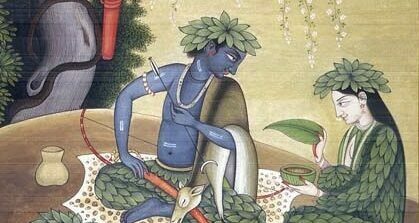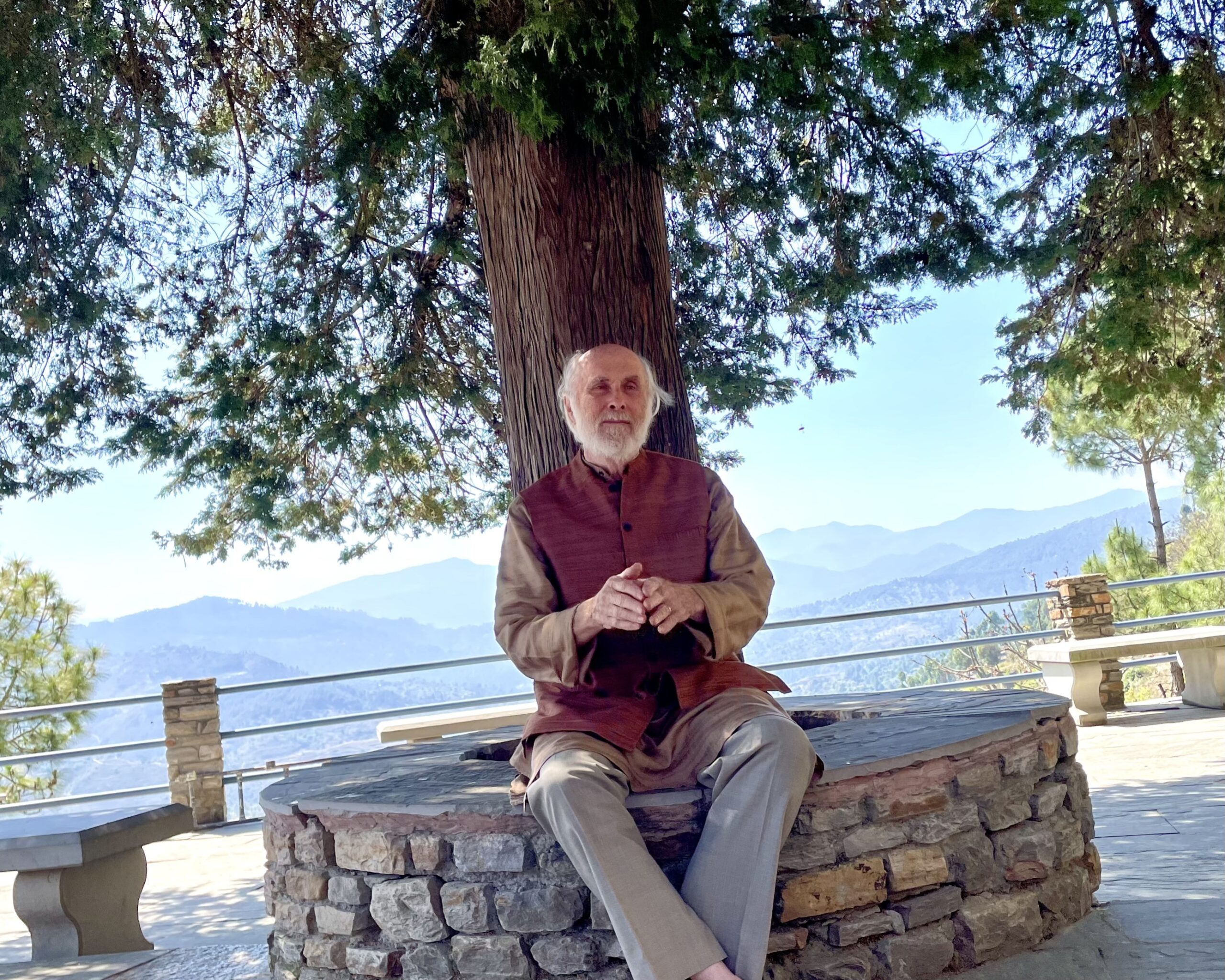
Meditation is the key practice of traditional Yoga and the prime factor behind an authentic Ayurvedic lifestyle.
Meditation goes to the root of our consciousness and prana, connecting us to our higher Self and aligning us with the healing forces of the Self-aware universe.
If we don’t meditate daily we lose our ability to relate to the whole of life or to our true nature. Our attention and vitality gets lost in the outer world.
Meditation in the Yoga Sutras
Yoga in the Yoga Sutras is defined as mastery, silencing and calming (nirodha) of the mind (chitta). This allows us to return to our true nature as the Seer or Purusha beyond the mind. This is also a definition of Samadhi or unity consciousness that is the goal of Yoga. Yoga is about deep meditation first and foremost. The simplest way to define this yogic mastery of the mind is developing detachment or vairagya from body and mind and the qualities or gunas of the external world.
The three inner factors of the eight limbs of Yoga are dharana, dhyana and samadhi, or concentration, meditation and absorption. These three together form samyama or deep yogic awareness that is the basis of the powers and insights of Yoga practice. While the Yoga Sutras contains only two Sutras related to asana, most of of the Sutras are related to these internal factors of meditation, samadhi and samyama, which are the basis of yogic Self-realization.
Understanding Yogic Meditation
Yogic meditation rests primarily upon taking the attitude of the witness (Sakshi-bhava), which means aligning our awareness with our inmost Self and Seer. We learn to witness the movements of the body, senses and mind from a place of silent observation and inner light. This grants detachment and discernment that removes negative karmic patterns from the mind. Whatever we witness from the standpoint of a higher awareness we gain freedom from and can heal at a deep level. In this regard, witnessing emotions transforms them, not trying to express them or suppress them.
Beyond Mindfulness to Self-awareness
Meditation today is linked with the idea of mindfulness, which suggests a mental activity. Yogic meditation emphasizes an awareness of the mind, which requires cultivating an intelligence and consciousness beyond the ordinary mind and senses. Much of what we call mind is not truly aware but conditioned often in a negative manner. This includes most of our memories and emotions. That lower aspect of the mind must be transformed by a higher consciousness. Otherwise we remain trapped in its karmic compulsions.
Yogic meditation is an internal quest for our immortal Self (Atman/Purusha), not simply an examination of the mind or body. It involves a systematic process of introspection, Self-examination and Self-inquiry. This is the basis of Jnana Yoga or the Yoga of knowledge as defined in Vedanta. Yet devotional forms of Yogic meditation are equally important, emphasizing surrender to the Divine within (Ishvara Pranidhana), including through various deity forms as in Bhakti Yoga, the Yoga of Devotion.
Mantra Meditation
Central to meditation in Yoga and Ayurveda Healing is the use of mantras.
In the Yoga Sutras, the mantra OM (Pranava) is the indicator of Ishvara or the Divine as the original teacher or Adi Guru of Yoga. Through OM we can access Ishvara and the power of Yoga. Yet OM as primal sound connects with the entire Vedic mantra tradition, starting with single syllable bija mantras, including Shakti mantras like Hreem, and extending to the mantric prayers or suktas of the Vedic rishis, such as the famous Gayatri mantra to the Deity Savita as the solar power of enlightenment.
There are specific methods in Yoga, Ayurveda and Vedic astrology for choosing mantras relative to individual conditions of doshas, gunas and karmas. There are special mantras taught in different Yoga traditions or by gurus for particular sadhanas and deity forms. There is no one size fits all for mantras but an adaptation necessary to a person’s karma and constitution. For this an examination is necessary to determine the appropriate mantras for the individual by the teacher.
Ayurveda like Yoga arises from the Rishi tradition of the Vedas and great yogis like Vasishta, Vamadeva, Yajnavalkya and Agastya. While Sri Krishna is the Vishnu avatar form for Yoga, Lord Dhanvantari is the avatar form for Ayurveda. Lord Shiva is the Lord of Yoga at a deity level and is also the ideal doctor in the oldest Rigveda. The Goddess (Devi) in all her forms is the Yoga Shakti or power of Yoga, who transmits the energy of mantra and meditation. Such deity connections can be very helpful to our meditation practices and provide a connection to the universal consciousness.
Ayurveda, Mantra and Meditation Therapy
Ayurveda employs Yoga as part of its Sattvavajaya therapy, one of its prime therapies along with balancing the doshas and rectifying our karmas. Sattvavajaya aims at increasing sattva guna, the quality of light and balance in our minds. In Ayurveda rajas and tamas, the qualities of agitation and inertia, are the doshas or factors of disease at the level of the mind. Increasing sattva through Yoga practices is the prime factor in Ayurvedic psychology and the treatment of the mind, for which meditation is a primary therapy.
The silent meditative mind naturally has the power to heal itself. The Secrets of Mantra Yoga allows us to create sattva in the mind.
To successfully approach meditation we must strive to lead a meditative life. This is defined according to the Yamas and Niyamas of yogic thought as aligned with an Ayurvedic lifestyle according our Ayurvedic constitution and stage of life and following a sattvic life style overall.
Right diet, right exercise, pranayama, right use of the senses, and following higher values in our behavior are essential to create the basis in our daily lives for meditation to become truly efficacious.Such dharmic living, honoring all life as sacred, becomes the right behavioral medicine to help us master and transcend the mind and its disturbances, while deep meditation is its prime practice.
Make sure to meditate, preferably early in the morning and before sleep at night to hold the awareness of your true Self throughout the entire day.
You can inquire Who Am I?, follow a mantra along with the breath like So’ham, contemplate a deity name or form or great guru, or whatever works for you, but you must meditate daily in order to sustain a dharmic life and for peace and happiness on all levels.
Dr. David Frawley (Vamadeva Shastri)






